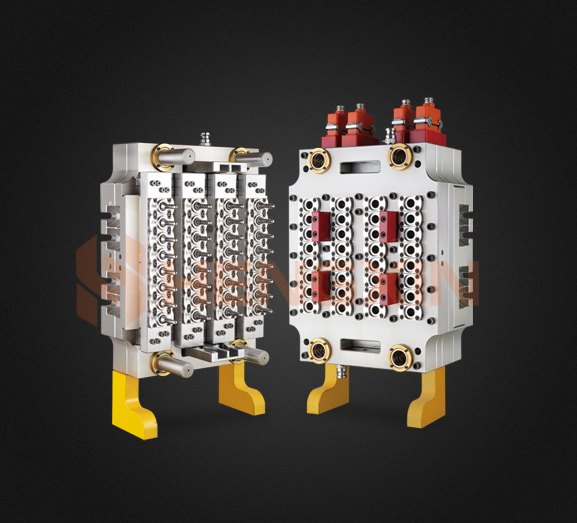Summary:
The process of manufacturing PET preform injections is characterized by the electrochemical reaction between two metals...
The process of manufacturing PET preform injections is characterized by the electrochemical reaction between two metals. This reaction produces a thin coating of another metal, which makes the surface of the mould smooth and provides better finishing. After the injection process, a manufactured PET preform mould is dipped in a chemical solution containing a finishing agent. This treatment increases the mould's durability and protective coating. In addition, the process also increases the lifetime of the mould.
Properties of PET
PET preform mould is an excellent option for the production of food containers. This material is very transparent and odorless. Besides, its properties include excellent chemical and thermal resistance, high pressure and creep resistance, and high impact resistance. It can be formed easily and has many advantages. Read on to know more about this material. This versatile plastic has many applications in the food industry. It is a popular choice for packaging. It is also recyclable.

The design and construction of PET preform mould are based on latest technological developments. They are made in one location. Moreover, they are constructed following European mould style and tested for more than 2.5 million injections. In addition, moldflow analysis has been performed to reduce the amount of NG visible during injection. Furthermore, the global criterion screw neck is manufactured with premium nitride steel to increase the durability and hardness of the mould.
The PET preform mould is specifically designed to manufacture high-quality PET components. It has to be precision-engineered and manufactured according to the specifications. The GO4 mould is a good example of a high-quality PET mould manufactured by a Chinese manufacturer. PET exists in two forms: amorphous and crystallized. The particle diameters of PET are less than 500 nanometers and three microns.
In the PET/Preform industry, a short cycle time and reduced maintenance costs are the main aims. This is to maximize profits from the existing moulds. Among the most popular PET applications are energy drinks, medications, milk and carbonated soft drinks. PET preform moulds are also designed for two-stage production. These are designed to produce bottles with a dark-tinted inner layer. While the length of time required for production varies from one PET preform mould to another, the most important feature is the material's strength.
Maintenance of a PET preform mould
Maintaining a PET preform mould is a vital part of efficient preform manufacturing. Proper maintenance can prolong the life of the mould and keep it performing at its best. The proper cleaning of parts and cores, as well as a planned downtime, will extend the life of your mould and help you achieve your business goals. You should perform regular inspections of your mould to identify any parts that may need maintenance or refurbishment. You can also optimize your mould purchase and maintenance costs by refurbishing your moulds on a regular basis.
Proper lubrication is essential for the PET preform mould. The lubrication system must have sufficient strength and stiffness to perform the task effectively. Proper lubrication is essential for the mold to be able to hold its shape, which is necessary for the preform to stay intact. Proper selection of materials is also crucial, and you should make sure your mold is made of a material that will increase its rigidity and stability.
Spraying on a PET preform mould
Performing regular maintenance on a PET preform mould is critical to its longevity. Proper lubrication will extend its life and increase production efficiency. Proper maintenance will also help you to prevent the preform from deforming. Here are some tips for maintaining your mould. Spray it with LPS3 or LPS2 to keep it from deforming. Also, remember to check the fastenings on moving parts.
The best way to maintain the aesthetics of a PET preform mould is to perform a final finish treatment. The spraying process uses airbrushes or spray guns to add a glossy layer to the mould. This process increases the durability of the PET preform mould without compromising aesthetic appeal. In contrast, powder coating is another way to apply a finishing layer. A powder coating agent adheres to the surface much better than spraying.
Coolant composition in a PET preform mould
PET preform molds are a type of test tube-shaped plastic manufactured using injection moulding. The process involves molten plastic filling a hollow metal piece in the desired shape. The plastic hardens to retain the desired shape. Unlike other forms of plastic moulding, PET preforms can vary in colour, shape, and neck finish. The versatility of PET preforms makes them a good choice for virtually all manufacturing sectors.
